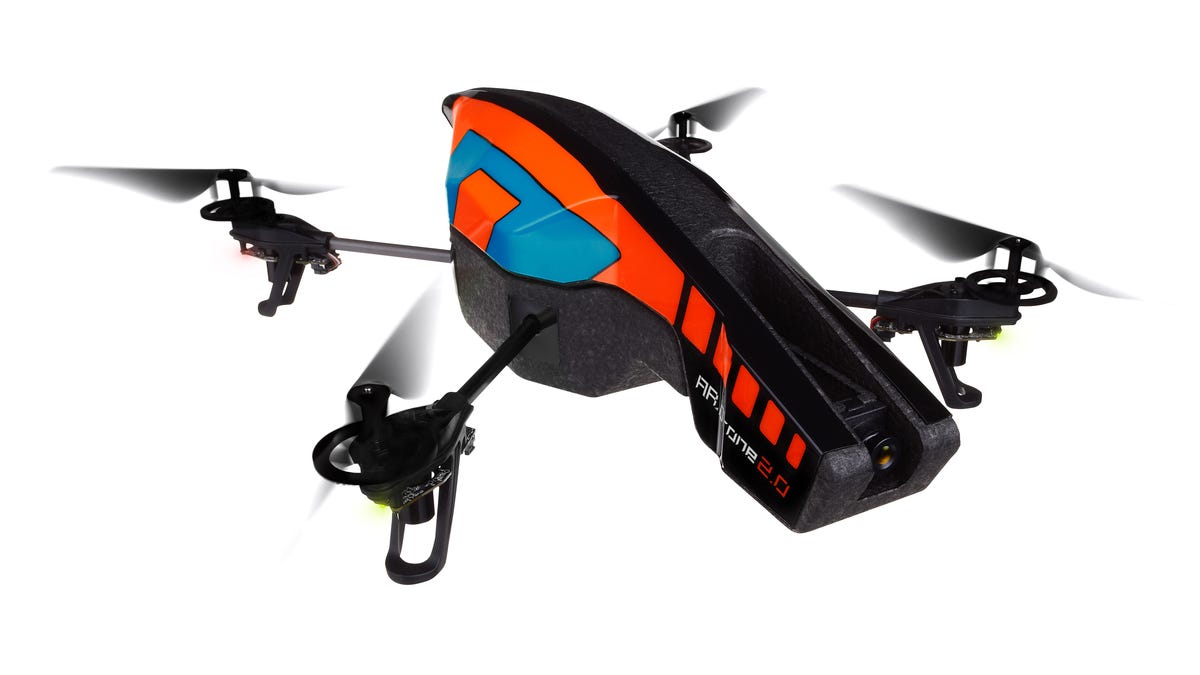Parrot AR.Drone quadcopter gets better specs and software
Latest update of the smartphone-controlled drone makes it a great tool for filmmakers.

The cool smartphone-controlled Parrot AR.Drone quadcopter, first shown at CES in 2010, is getting some good updates that are being announced at this year's conference.
The biggest changes for the AR.Drone 2.0 are hardware and software improvements to make the device easier to fly. Better location and orientation sensors should make the drone more stable in the air, and a new pressure sensor will help it hold its altitude more accurately when it's more than a few feet off the ground (when the ultrasonic ground proximity sensor is ineffective).
On the software side, a new "absolute flight" mode lets you steer the drone around in the air by just tilting your smartphone; the copter points itself in the direction of travel automatically. If you want to fly it in a more conventional way, like a radio-controlled helicopter, there's an expert mode as well. The control app is available for iOS and Android.
There's also a "director mode" that lets you fly the copter in a sideways orientation, which is useful for recording video.
Getting the view from above it is what this bird is about. A new 720p camera in the copter's nose beams the image to your smartphone, and you can record that view as well (presumably without the pilot controls that are overlaid on the smartphone).
This product is sold as a hobby product or a toy, but the live video capture tool makes it more important than that; quadcopters are being used for legitimate (and not) business purposes, not to mention by police forces, protestors, and obviously for military and paramilitary applications. And, of course, for making movies.
On the other hand, the AR.Drone's non-toy applications will be limited by its reliance on Wi-Fi for control and video transmission. And since it uses a direct Wi-Fi connection (the drone acts as its own hub), you can't rely on signals from other Wi-Fi routers to extend the range (technically, you could, but that would be a topic for AR.Drone discussion boards). In fact, other Wi-Fi can interfere with the drone, and the Parrot team won't fly the thing indoors at CES since they've already experienced what happens in the "Wi-Fi war zone" of a big conference. I saw a drone zoom off crazily into someone's head last year; fortunately, the Styrofoam bumpers around the drone prevented any injury.
The AR.Drone comes with some "virtual reality" games in which you fly the drone around and the screen on your smartphone shows target information and game data, which can include "missiles" shot at drones that friends are flying, superimposed on the control screen. That's superfluous. With this update, the AR.Drone becomes more than a toy, and will likely become popular more for its capability to capture aerial video. It's the ultimate accessory for filmmakers.
The AR.Drone 2.0 will ship in Q2 this year and list for $299, a new low price for the product.
Video to come...

